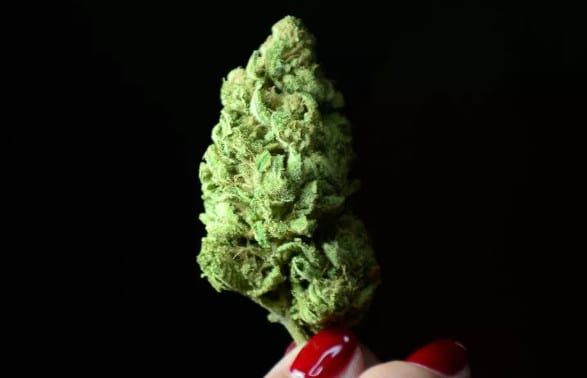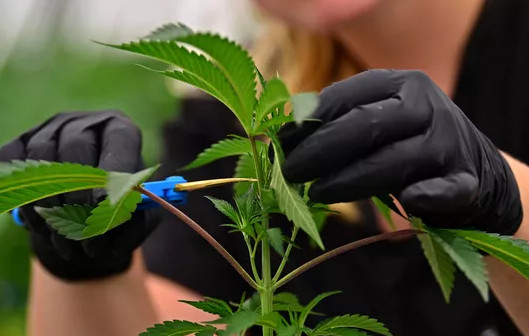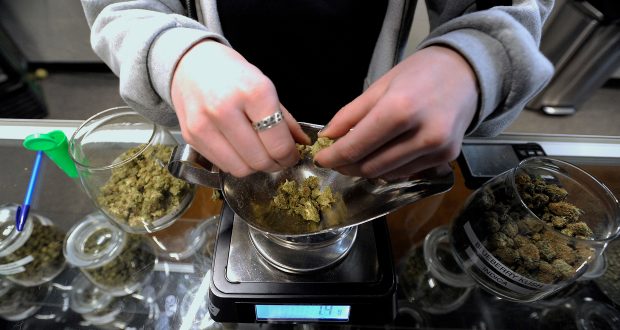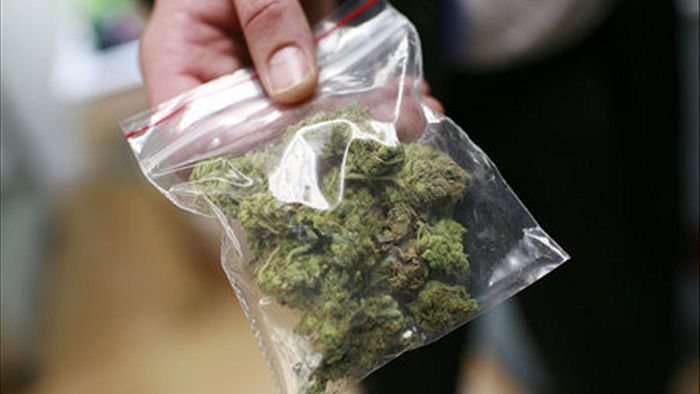The marijuana industry is growing by leaps and bounds and has not surprisingly been a favorite among investors. Over the past year, more marijuana stocks with a market cap north of $200 million than not have at least doubled in value.
Changing perceptions toward cannabis have played a very big role in pot’s ascendance of the past couple of years. National pollster Gallup, which has periodically surveyed the American public over a nearly five-decade period, has witnessed favorability toward the idea of legalizing the drug nationally for adult use rise from 25% in 1995 to 60% in 2016, an all-time high. The pro-legalization thesis assumes that if favorability toward weed keeps rising, politicians will have no choice but to alter marijuana’s scheduling at the federal level or risk being voted out of office.
A new report suggests the weed industry can grow by 36% annually through 2021
But just how quickly the marijuana industry can grow has often been a question of great contention. Investment firm Cowen & Co. has arguably had the most aggressive growth forecast, calling for $50 billion in legal sales in the U.S. by 2026. However, a new reportissued by GreenWave Advisors on the state of the emerging cannabis industry might just top Cowen & Co.’s bullishness.
The headline figure in GreenWave’s report sticks out like a “green” thumb: $30.3 billion in legal U.S. sales expected by 2021. Mind you, legal U.S. sales grew by approximately 35% in 2016 to $6.5 billion, with $1.8 billion in reported recreational-weed sales and an estimated $4.7 billion derived from medical-marijuana sales. Forecasting $30.3 billion in sales by 2021 implies a compound annual growth rate of 36.1% over the next five years. That’s a blistering pace that tops any projection I can find over that same span.
Where’s this growth coming from? Amazingly, from every single U.S. state, according to GreenWave. By 2021, GreenWave anticipates that every U.S. state will have legalized cannabis either medically or recreationally. All told, 21 states are expected to have moved forward with medical cannabis only by then, and 29 will have legalized adult-use and medical weed. The report assumes $17.9 billion in medical cannabis sales if all states approved, implying 281% aggregate growth over five years, while recreational weed is expected to make up the remaining $13.4 billion, representing 644% growth over half a decade.
Data as of 2016 shows there to be approximately 26.3 million medical-cannabis patients spending an average of $3,200 a year. Also, around 30 million adults in the recreational market are expected to spend $1,500 this year.
How the marijuana industry can overcome two big obstacles
Of course, the marijuana industry is also fighting an uphill battle involving the drug’s Schedule I status at the federal level. A Schedule I drug has no recognized medical benefits and is completely illegal. This categorization for pot means few financial institutions are willing to do business with weed-based companies, leaving many to deal solely in cash. It also means that companies involved in the marijuana industry are usually unable to take corporate income-tax deductions because of U.S. tax code 280E, as they’re selling a federally illegal substance. Even clinical researchers are dealing with a mountain of red tape when trying to run risk-versus-benefit studies involving cannabis because of its scheduling.
However, GreenWave sees some relief to these issues in the years to come. A vital part of its growth thesis involves two shifts at the federal level. First, the report suggests the likelihood of a friendlier banking environment under the Trump administration. President Trump’s previously iterated desire to deregulate the banking industry, and remove the compliance burdens associated with Sarbanes-Oxley, could open the door for banks to lend to cannabis businesses. Having access to credit should mean more rapid expansion and hiring, as well as the ability to buy supplies in bulk, thereby saving money and improving margins in the process.
In addition, GreenWave expects other states to follow Washington state’s efforts with regard to consolidating their medical and recreational industries. According to the report, “Washington state has moved toward consolidating its recreational and medical markets with a ‘medical friendly’ designation, that requires an in-house certified medical marijuana consultant to issue a ‘recognition card.'” GreenWave believes the related expenses of the medical and recreational industry should help qualify them for some deductions under U.S. tax code 280E.
Perhaps the biggest issue is going to be apathy on Capitol Hill toward marijuana. Gallup has found that two groups of people still have a negative view on cannabis: senior citizens and Republicans. With Republicans in charge of Congress until at least 2018, and Donald Trump in the White House through 2020, there doesn’t seem to be much of a margin for error in changing things at the federal level, or even the state level in some instances. It also doesn’t help that healthcare, tax reform, and the annual federal budget are taking up all of the available time for lawmakers in Congress.
President Trump signing paperwork, flanked by Attorney General Jeff Sessions and his wife. Image source: President Donald J. Trump’s official Facebook page. Photo by Benjamin D. Applebaum.
There’s also no love lost between the pot industry and Attorney General Jeff Sessions, who just might be the most ardent opponent of cannabis in the administration. Sessions sent congressional leaders a letter in May requesting that they repeal the Rohrabacher-Farr Amendment, which is what protects legally operating weed businesses from federal prosecution. If Sessions had his way, he’d promptly trample states’ rights. It’s tough to see every state legalizing to some degree with Sessions still in office.
But the biggest issue might be that two dozen states lack the initiative and referendum (I&R) process, which is what allows residents in a state the opportunity to gather signatures and vote on propositions. States that don’t have the I&R process rely on their legislatures to pass laws. Vermont, which is arguably a very progressive and pot-friendly state, doesn’t have the I&R process, and Gov. Phil Scott (R-Vt.) vetoed a bill three months ago that would have legalized recreational weed in the state. I foresee scenarios like this continuing to play out over the next five years.
credit:420intel.com













